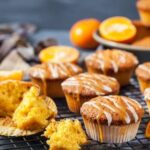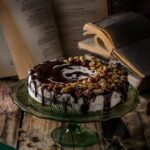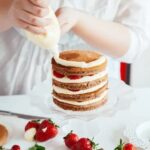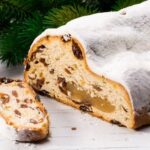Buttercream frosting is one of the most versatile and popular options for decorating cakes. Whether you’re a beginner or an experienced baker, mastering the art of buttercream cake decorating can take your creations to the next level. In this article, we’ll explore everything you need to know about using buttercream to decorate your cakes, from selecting the right frosting to mastering basic and advanced decorating techniques.
When it comes to buttercream cake decorating, having the right tools and equipment is essential. From piping bags and tips to offset spatulas and bench scrapers, we’ll cover all the necessary items you’ll need in your arsenal for successful buttercream decorating. Additionally, we will discuss how to select the perfect buttercream frosting for your specific needs, whether it’s for piping intricate designs or creating a smooth finish on your cake.
Preparing a cake for buttercream decorating is a crucial step that can significantly impact the final result. We’ll provide helpful tips on how to properly level, fill, and crumb coat your cake before diving into the various buttercream decorating techniques. Whether you’re new to cake decorating or looking to elevate your skills, mastering these basics is essential for achieving professional-looking results with buttercream.
Tools and Equipment Needed for Buttercream Cake Decorating
When it comes to buttercream cake decorating, having the right tools and equipment is essential to achieve professional-looking results. Whether you’re a beginner or an experienced baker, there are certain items that are necessary for successful buttercream cake decorating.
One of the most important tools for buttercream cake decorating is a good set of piping tips and bags. The piping tips come in various shapes and sizes, allowing you to create different designs and textures on your cakes. Additionally, investing in a quality offset spatula is crucial for smoothing out the buttercream frosting on the cake’s surface.
Another essential item for buttercream cake decorating is a turntable. This rotating platform allows you to easily access all sides of the cake while applying the buttercream frosting. It helps to create smooth and even layers of frosting, resulting in a professional finish.
In addition to these tools, having a bench scraper or comb is also beneficial for creating textures and patterns on the surface of the buttercream. These tools help add visual interest and dimension to your cake decorations, elevating the overall look of your design.
Ultimately, having these key tools and equipment will set you up for success when it comes to decorating cakes with buttercream frosting. With the right supplies at your disposal, you’ll be well-equipped to bring your creative vision to life and produce stunning cakes that are sure to impress.
Selecting the Right Buttercream Frosting
When it comes to buttercream cake decorating, selecting the right kind of buttercream frosting is crucial. The type of frosting you choose will greatly affect the outcome of your cake’s appearance and flavor. Here are some popular types of buttercream frostings to consider for your cake decorating needs:
- American Buttercream: This type of buttercream is the simplest to make, using just butter, powdered sugar, and flavorings. It is easy to work with and holds its shape well, making it suitable for piping designs and decorations.
- Swiss Meringue Buttercream: Known for its silky texture and less sweet taste compared to American buttercream, this frosting is made by heating egg whites and sugar over a double boiler before whipping in butter. It is ideal for creating smooth finishes on cakes and for intricate piping work.
- Italian Meringue Buttercream: Similar to Swiss meringue buttercream but with a more stable structure due to the addition of a hot sugar syrup while whipping the egg whites. Italian meringue buttercream is perfect for wedding cakes and other special occasion cakes that require a more polished look.
No matter which type of buttercream frosting you choose, it’s important to consider the flavor, texture, and intended use for your cake. Some decorators prefer the simplicity of American buttercream for quick projects, while others opt for the elegance of Swiss or Italian meringue buttercreams for more formal occasions.
In addition to selecting the right type of buttercream frosting, it’s also essential to consider flavor variations such as chocolate, vanilla, fruit-flavored, or even flavored with extracts like almond or coconut. This allows decorators to create unique and customized designs that not only look stunning but taste delicious as well. Each type of frosting has its own set of pros and cons when it comes to taste, stability, and versatility in decorating.
Ultimately, choosing the right buttercream frosting can greatly enhance your cake decorating experience. By considering factors such as texture, sweetness level, stability in different temperatures, color possibilities (especially if you’ll be tinting your icing), and ease of use you’ll be better equipped on how to decorate a cake with buttercream that matches your specific needs and personal preferences.
Preparing the Cake for Decorating
Before you can start decorating a cake with buttercream, it’s essential to ensure that the cake itself is ready for the frosting. Here are some steps to prepare your cake for decorating:
Leveling and Layering
To create a professional-looking cake, it’s important to level the top of each cake layer to ensure a flat surface for decorating. Use a long serrated knife or a cake leveler to carefully trim off any domed tops. Once the layers are leveled, you can begin stacking them with a thin layer of buttercream between each one.
Crumb Coat
Before applying the final layer of buttercream, it’s advisable to do a crumb coat. A crumb coat is a thin layer of frosting that locks in any loose crumbs, preventing them from showing in the final coat. Spread a thin layer of buttercream over the entire cake and refrigerate it until the frosting is firm to the touch.
Chilling the Cake
After applying the crumb coat, it’s best to chill the cake for at least 30 minutes before continuing with the final decorations. Chilling helps set the buttercream and makes it easier to work with when adding more intricate details or designs.
By following these steps, you’ll have a smooth and even surface on which to decorate your cake using buttercream. Remember that how to decorate a cake buttercream involves not only mastering frosting techniques but also paying attention to preparing the foundation for your decorative endeavors.
Basic Buttercream Decorating Techniques (Eg Piping, Smoothing, Texture)
Decorating a cake with buttercream can seem daunting at first, but with the right techniques and practice, you can achieve beautiful and professional-looking results. Here are some basic buttercream decorating techniques to get you started:
1. Piping: Piping is one of the most common techniques used in buttercream cake decorating. To pipe buttercream onto a cake, you will need piping bags and various tips such as round, star, and leaf tips. You can create borders, swirls, and even intricate designs using different piping techniques.
2. Smoothing: Achieving a smooth finish on a buttercream cake takes practice, but it is essential for creating a polished look. Use an offset spatula to spread the buttercream evenly across the surface of the cake. You can also use a bench scraper to smooth out any imperfections and create clean edges.
3. Texture: Adding texture to your buttercream cake can give it dimension and visual interest. You can create texture using tools such as combs, stencils, or even just the back of a spoon. Experiment with different techniques to see what works best for your design.
Mastering these basic buttercream decorating techniques will set the foundation for more advanced methods such as creating flowers, writing, and rosettes. Practice these techniques on dummy cakes or cookies before moving on to decorate an actual cake for special occasions. With time and patience, you’ll be able to decorate stunning cakes that are sure to impress your friends and family.
Advanced Buttercream Decorating Techniques (Eg Flowers, Writing, Rosettes)
Decorating a cake with buttercream frosting can take your baking skills to the next level. Once you have mastered the basic techniques such as piping and smoothing, you can move on to more advanced buttercream decorating techniques. In this section, we will cover how to create beautiful buttercream flowers, write messages on cakes, and craft elegant rosettes.
To create buttercream flowers, you will need the right piping tips and a steady hand. Start by mastering the art of creating different petal shapes, such as roses, daisies, and sunflowers. With practice, you can then learn how to assemble these petals into stunning flower designs that will elevate your cake decoration to a professional level.
Writing on a cake with buttercream requires precision and control. Use a small round piping tip to pipe out clear and legible messages on your cakes. Whether it’s a celebratory message or a simple “Happy Birthday,” writing with buttercream can add a personal touch to your creations.
Finally, rosettes are a classic buttercream decoration that adds elegance to any cake. By using a star-shaped piping tip and practicing consistent pressure while piping, you can create beautiful rosette designs that will impress your friends and family.
Mastering these advanced buttercream decorating techniques will require patience and practice. But with dedication and creativity, you can take your cake decoration skills to new heights.
| Advanced Buttercream Decorating Techniques | Examples |
|---|---|
| Buttercream Flowers | Roses, Daisies, Sunflowers |
| Writing on Cakes | Celebratory Messages |
| Rosettes | Elegant Designs for Cakes |
Tips for Achieving Professional-Looking Results
When it comes to decorating a cake with buttercream, there are some tips and tricks that can help you achieve professional-looking results. Whether you’re a beginner or an experienced baker, these tips can take your cake decorating skills to the next level.
Consistency Is Key
One of the most important aspects of achieving professional-looking results when decorating a cake with buttercream is ensuring that your frosting has the right consistency. If the frosting is too stiff, it will be difficult to pipe and may result in uneven textures.
On the other hand, if the frosting is too soft, it won’t hold its shape when piped onto the cake. The ideal consistency for buttercream frosting is smooth and creamy, but still able to hold its shape when piped.
Use High-Quality Tools
Investing in high-quality cake decorating tools can make a world of difference in achieving professional-looking results. From piping tips and bags to offset spatulas and bench scrapers, having the right tools on hand can help you create clean lines, smooth surfaces, and intricate details on your cakes.
Practice Patience
Achieving professional-looking results takes time and patience. Don’t rush through the decorating process – take your time to ensure that each detail is executed with care. Whether you’re smoothing out frosting or piping intricate designs, practicing patience will result in a beautifully decorated cake that looks as though it came from a bakery.
By following these tips for achieving professional-looking results when decorating a cake with buttercream, you’ll be well on your way to creating stunning confections that are sure to impress any crowd.
Troubleshooting Common Buttercream Decorating Issues
When it comes to decorating a cake with buttercream, there are certain common issues that can arise, causing frustration and disappointment. However, with the right knowledge and techniques, these issues can be easily resolved, allowing you to achieve the professional-looking results you desire. In this section, we will explore some of the most common buttercream decorating problems and provide helpful solutions for overcoming them.
One common issue that cake decorators may encounter is air bubbles in their buttercream. These air bubbles can create an uneven texture on the surface of the cake, detracting from its overall appearance. To prevent air bubbles from forming in your buttercream, be sure to mix your frosting on low speed to minimize air incorporation.
Additionally, gently tapping the filled piping bag on the counter before decorating can help release any trapped air. If air bubbles do appear while decorating, simply use a toothpick or small offset spatula to gently pop them and then smooth out the area with an icing smoother.
Another frequent problem when decorating with buttercream is bulging or oozing filling between cake layers. This issue typically occurs when too much filling has been added or when the cake layers have not been properly leveled.
To avoid bulging or oozing, be mindful of the amount of filling used and ensure that it is spread evenly between layers. Additionally, make sure to level each cake layer with a serrated knife or cake leveler before stacking to create a stable foundation for decorating.
In addition to these challenges, color consistency can also be a concern when working with buttercream frosting. Achieving uniform color throughout your frosting can sometimes be tricky, especially when using gel food coloring. To ensure consistent coloration, it’s important to thoroughly mix in your food coloring until fully incorporated. For larger batches of colored frosting, consider mixing multiple smaller batches separately before combining them together for better color distribution.
By understanding how to troubleshoot these common buttercream decorating issues and implementing the recommended solutions, you can enhance your skills as a cake decorator and achieve flawless results every time.
Final Thoughts and Inspiration for Your Buttercream Cake Decorating Journey
In conclusion, learning how to decorate a cake with buttercream can be a rewarding and fun journey for any baker. The versatility of buttercream allows for a wide range of creative possibilities, making it an ideal choice for both beginners and experienced decorators. By mastering the basic and advanced techniques outlined in this article, you can create stunning designs and achieve professional-looking results.
As you embark on your buttercream cake decorating journey, remember that practice makes perfect. Don’t be discouraged if your first attempts don’t turn out exactly as planned – with time and perseverance, your skills will improve. Additionally, don’t be afraid to experiment with different colors, textures, and designs. The beauty of buttercream is that it offers endless opportunities for creativity.
Finally, seek inspiration from other decorators and cake artists. Social media platforms like Instagram and Pinterest are great places to discover new techniques and ideas for buttercream decorating. Joining online communities or taking a class can also provide valuable support and guidance as you continue to hone your skills. Ultimately, the key to successful buttercream cake decorating lies in passion, patience, and a willingness to learn and grow as a decorator.
Frequently Asked Questions
How Do You Decorate a Cake With Buttercream for Beginners?
Decorating a cake with buttercream for beginners involves starting with a crumb coat to seal in the cake crumbs, then adding a final layer of buttercream to create smooth and even surfaces. Using piping bags and various tips can help create different designs.
What Is the Best Buttercream to Decorate a Cake?
The best buttercream for decorating a cake is often Swiss meringue buttercream or Italian meringue buttercream. These types of buttercream are more stable, smoother, and less sweet than American buttercream, making them easier to work with for decorating purposes.
How Do You Put Buttercream on Top of a Cake?
To put buttercream on top of a cake, start by applying a thin layer of buttercream as a crumb coat to seal in any loose crumbs. Then, add a thicker layer of buttercream and use an offset spatula to spread it evenly across the top of the cake. Smooth out any bumps or ridges for a clean finish.

Welcome to my blog about home and family. This blog is a place where I will share my thoughts, ideas, and experiences related to these important topics. I am a stay-at-home mom with two young children. I hope you enjoy reading it! and may find some helpful tips and ideas that will make your home and family life even better!





